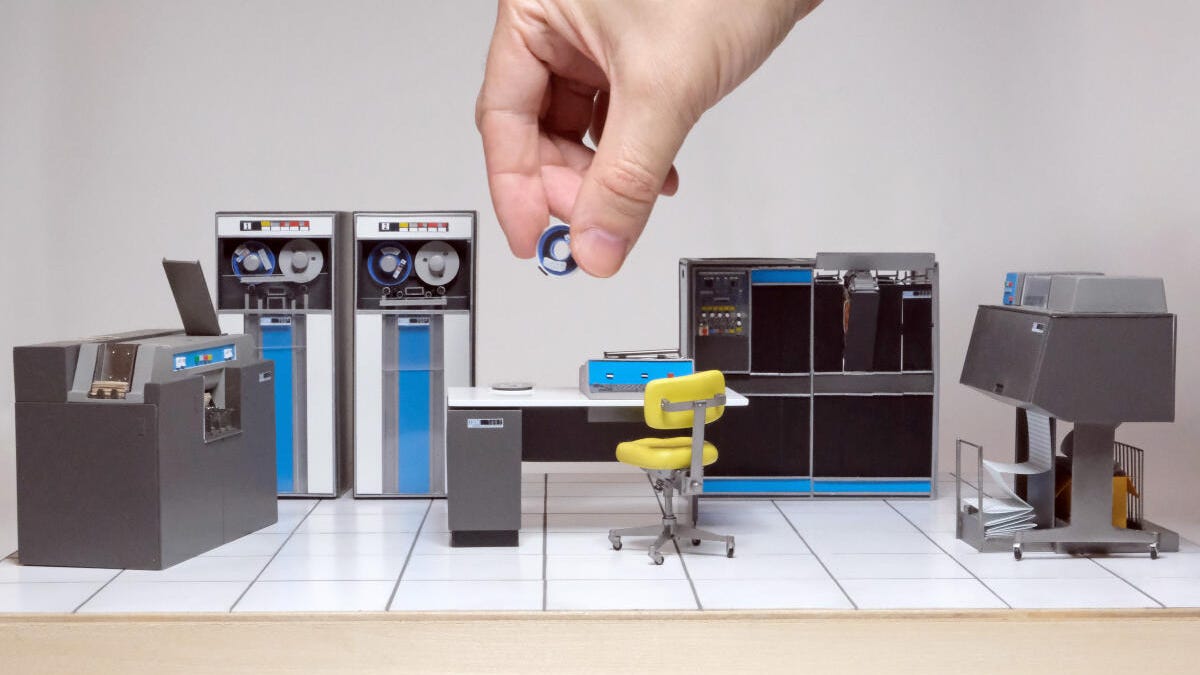Marvel at this amazing miniature model of an 1959 IBM mainframe computer
Nicolas Temese didn't use 3D printing. He built the entire model of the 1401 computer system from scratch, including teeny tiny punchcards.

Nicolas Temese's miniature model of the IBM 1401 computer system. The real version was created in 1959 and rented for $2,500 a month (£2,032, AU$3,641).
Computers have gotten a lot smaller since 1959, when IBM created the 1401 data processing system, touted as the world's first affordable general purpose computer. But Nicolas Temese, a Montreal indie game developer and animation studio technical developer, decided to remake the 1401 in miniature mode. Like really, reallly miniature.
"I have always been interested in computer history in general," Temese told me. "People often forget how primitive they once were, yet how powerful they were back then. I think the 1401 is such an iconic computer, I always had a fascination for it and I thought it would be a fun challenge to replicate."
Temese, who shared the photos of the incredibly detailed model on his Instagram account, chose not to use 3D printing for the project. Instead, he spent 300 hours designing and constructing it on his own, starting with flat sheets of polystyrene.
"I usually design on paper or on the computer first, since a lot of the dimensions are hard to find references for," he said. "Then I measure and cut the pieces and glue them together. Lot of sanding and finish is involved, then airbrushing and different types of varnish to try and replicate the original finish of the surfaces."
Temese said he has been making miniatures for years, but nothing this serious or precise. "I don't have training in this," he said. "I learned everything by myself, but I have always been a maker at heart."
And he didn't stint on the details. Temese's model includes a punchcard reader, teeny tiny punchcards, two tape drives, a query console, central unit, a line printer, floating floor and even a tiny, bright yellow wheeled office chair.
His favorite part of the model are its gates -- the drawers that fold out of the main processing unit.
"The original gates had a backplane that was wire-wrapped by hand and for around two months I put it aside because I had no clue on how to do it in a convincing way," he admits. "It was a lot of work, making all those pins by hand, all the fake wires and the orange (SMS) cards, but I think the final look was very convincing."
He's posted more photos of the build process online, with the SMS card unit build depicted here and the office chair build depicted here.
"I think people really like the little chair as well, since I think it's a more relatable item for more people," he said. "It was a fun thing to make."
Since he started posting his progress, he's heard from numerous computer-industry veterans sharing memories of the real thing.
"When I first started posting pictures online of my model, I wasn't sure that many people would even know what it was," Temese admits. "I was very surprised to see there was so many people who worked with (or) on these systems back then that remember it and have such fond memories of it. I heard from people at IBM as well as people who worked on the original system and it is really validating to me when they comment on it and appreciate the accuracy of it."
Temese says he's still working on a few last details.
"It will have a nice frame around it and a back wall with the IBM logo of the era," he said. "The whole thing is actually animated since most of the lights and the tape drives actually move. I built a microcontroller board for it that I programmed to make the whole thing light up."
And when he's finished, the miniature has already found a home -- the Computer History Museum in Mountain View, California. "They have a working copy of the original 1401 over there," Temese said, "and I think my miniature will feel right at home."

